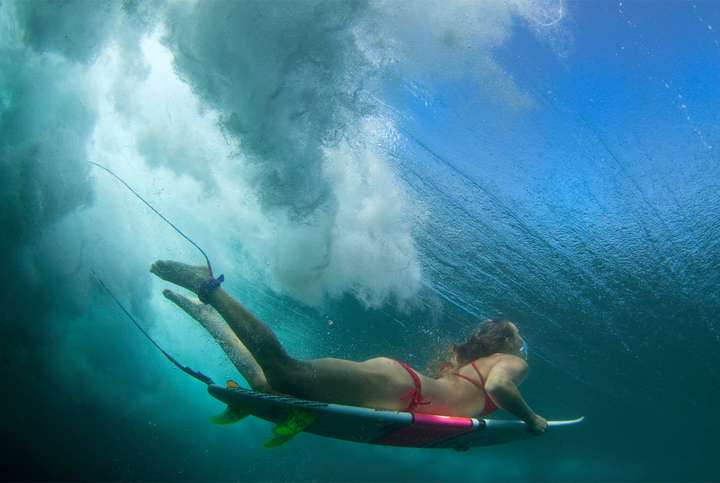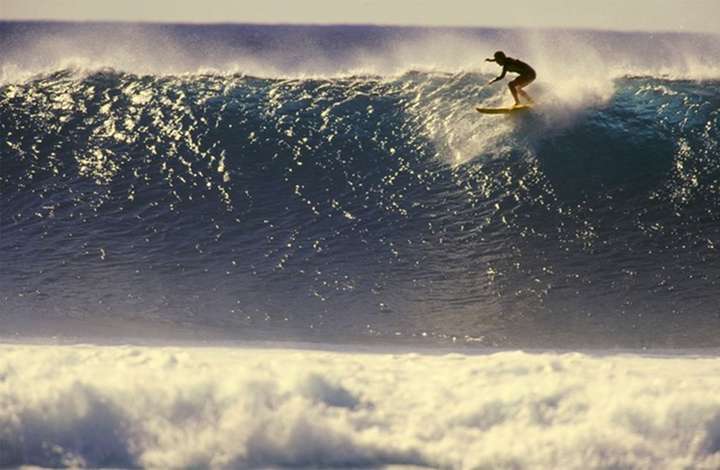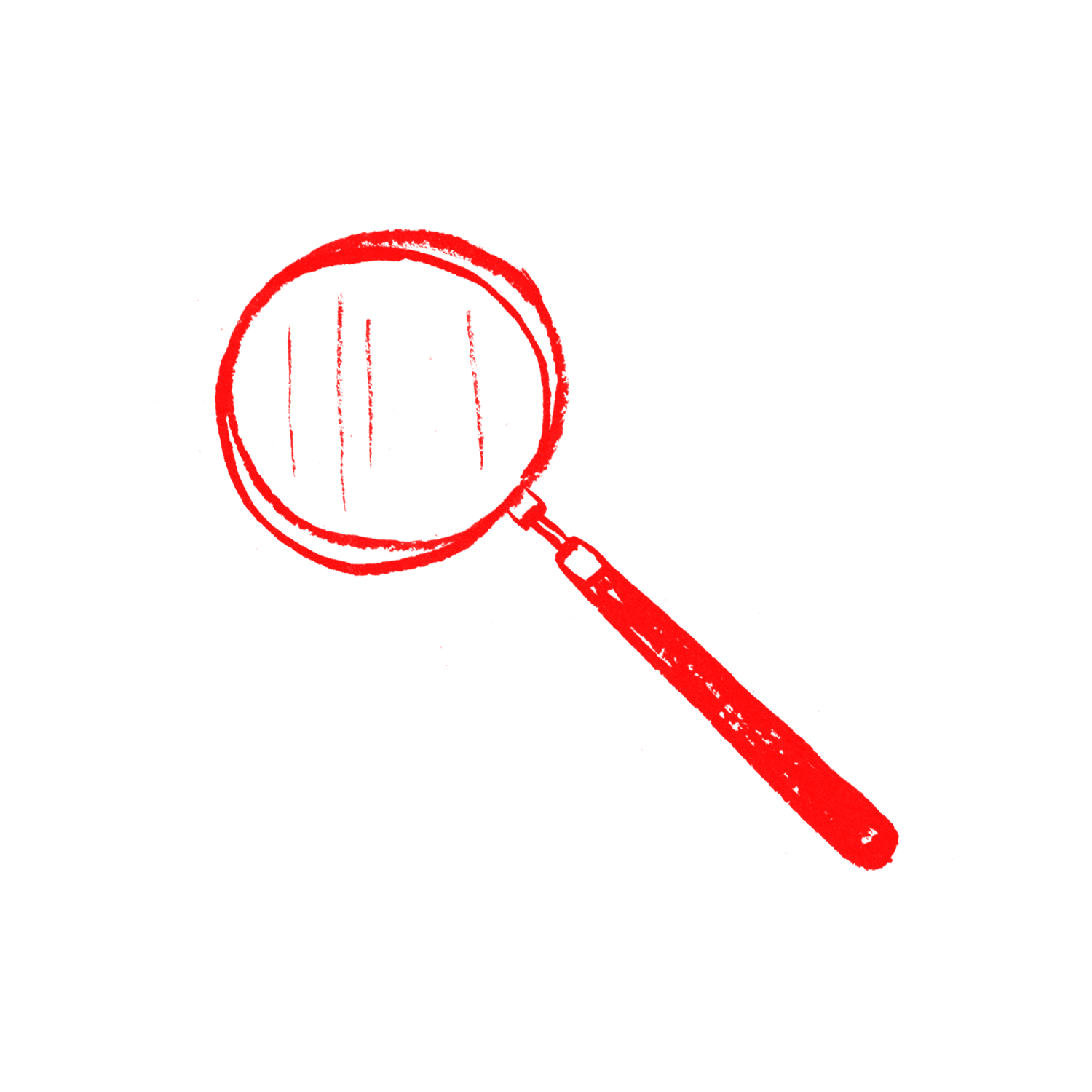Some Waves Are Worth Dying For
By A. N. Devers
Big wave surf heroes Paige Alms and Kiyomi Sheppard are murdering misogyny and risking their lives for a living.
• • •
One of the things you must come to terms with when you become a big wave surfer is that you might die. The power imbalance between a human being and a three-story-high wall of moving water means that, no matter the high of the experience, one wrong move could mean the end. Nevertheless, people do it, and more and more women are taking on big waves despite the risks involved. This month, the Women’s Waimea Bay Championship (also known as Queen of the Bay, sponsored by Red Bull) is in a holding period, with all contestants waiting for the swell to give them waves big enough to challenge. The water safety team is also waiting, having taken extra CPR training to rescue unconscious athletes.
Perhaps the most notorious near-death experience for a female surfer was Maya Gabeira’s 2013 wipeout. In Nazaré, off Portugal’s coast, Gabeira took on a wave nearly twice the size of any she’d surfed before, and lost, nearly drowning during the time spent pinned down by the other 50-foot waves in the set. After a dramatic rescue by fellow surfer Carlos Bure, Gabeira was revived on the beach. She spent the next two years having multiple surgeries, but returned and surfed Nazaré again in 2015, saying, “I never had any second thoughts.”
We had to know more about why people would do this, and what it’s like. So we talked to the world’s first female big wave champion, Paige Alms, and to world-ranked paddle boarder and surfer Kiyomi Sheppard—both competing in the Waimea Bay event—about their sport and how they confront fear, risk of death, and the sexism that pervades the industry.

Photographed by Erik Aede © Caters News
Paige Alms dives under a wave.
On Wipeouts
KIYOMI SHEPPARD: It feels like you are being tumble-dried in a washing machine.
PAIGE ALMS: It feels like you’re in the middle of a car accident, as if your limbs are being ripped out, and usually the initial impact gives you whiplash. But you must remain calm and try not to waste energy because you have to hold your breath the entire time.
On Fear
ALMS: You have to become OK with injury and death. It’s not like every big wave session is life threatening, but you really have to be OK with it. If I were to die doing what I love, I think there is no better way to go.
I’ve had a lot of injuries, and they have shaped me into who I am today and shaped my decision-making process. I know that what I do puts my life at risk as well as those who are there to come rescue me, but I also know that the best version of myself is when I am riding these waves.
SHEPPARD: When I heard about the women’s big wave contest, I hadn’t trained for big wave surfing for a long time, but I feel like I have one perfect chance to get one good wave. It is a competition of my lifetime, a competition for myself. I am scared, of course, but if I can have just one wave, my fear is eased, because I am in my best health and my best physical condition. I do say a prayer to ask protection to my religion and my family sleeping at night in Sunset Beach. And I pray at the Eddie Aikau Memorial.
"It feels like you’re in the middle of a car accident, as if your limbs are being ripped out, and usually the initial impact gives you whiplash. But you must remain calm and try not to waste energy because you have to hold your breath the entire time." —Paige Alms, on wiping out
On Their First Big Wave
ALMS: I was 15 when I had my first big wave paddle session. I was taken out to an outer reef on Maui, my first time on a 9-0 gun [a surfboard for big waves], and was coached into a few waves. From there I was hooked. I don’t think I would have titled myself a big wave surfer at that moment, but I knew I loved them.
SHEPPARD: I went from Japan to Australia 24 years ago by myself, [and that is when] I started surfing. I didn’t have a big wave dream first. I wanted to figure out how I could make a surfing life. [For my first big wave] I was at Sunset Beach. Everything happened so fast, but I experienced it in slow motion.

Photo courtesy of Kiyomi Sheppard
Kiyomi Sheppard surfs Sunset Beach near her home in Oahu, Hawaii.
On Sexism and Prize Money Inequality in Surfing
SHEPPARD: We need more women surfing. The inequality comes from having far more men surfing than women. In the water it doesn’t matter whether you are a man or a woman. But maybe the media isn’t ready to show that because there aren’t that many women surfing yet.
ALMS: I guess it is all a matter of perspective. I have always seen women pushing the limits and breaking down boundaries. In the past few years, you can see that a lot has changed—more events, more prize money, more opportunity, more articles on women’s surfing.
Up until about a year ago, I worked three or four jobs a week, at a restaurant, catering, construction, whatever it took to make ends meet and put a little money aside for travel. Now, with the help of my sponsors, I am able to work only a few nights a week at a restaurant here on Maui and put 100 percent focus into my surfing and training. I can see that in the future, women will be able to make a living doing what we are doing now.
A. N. DEVERS is a writer living in London and Asbury Park, New Jersey. She surfs whenever she has the chance.

Photographed by Erik Aede © Caters News
Paige Alms surfs a giant wave.
Video clip from The Wave I Ride: The Story of Big Wave Surfer Paige Alms courtesy of Red Bull Media House.
Published 11–13–2017


